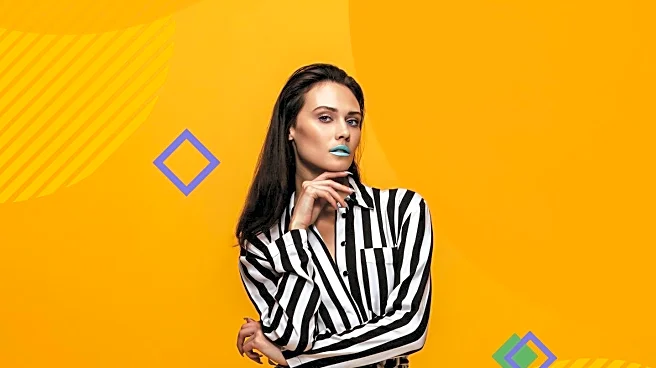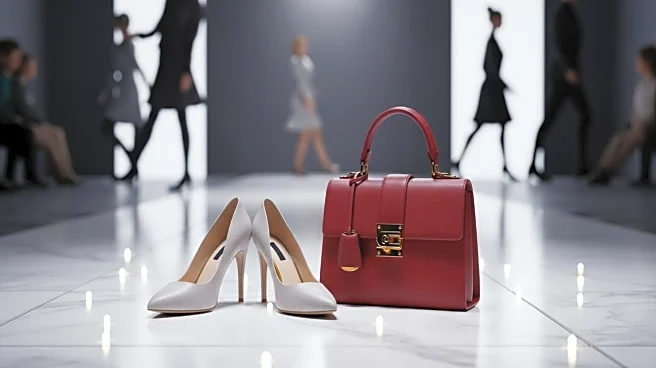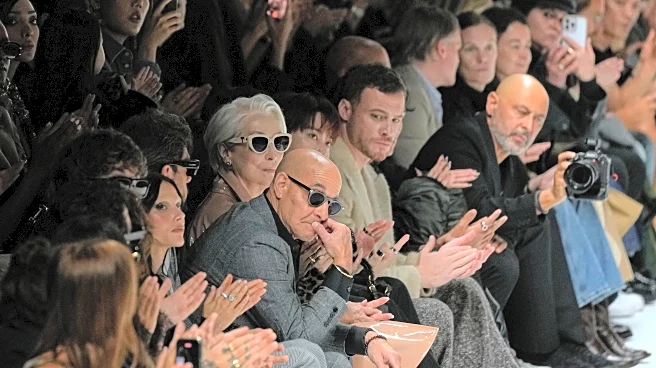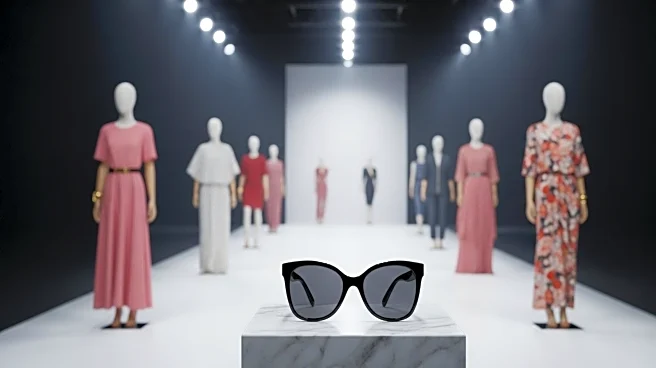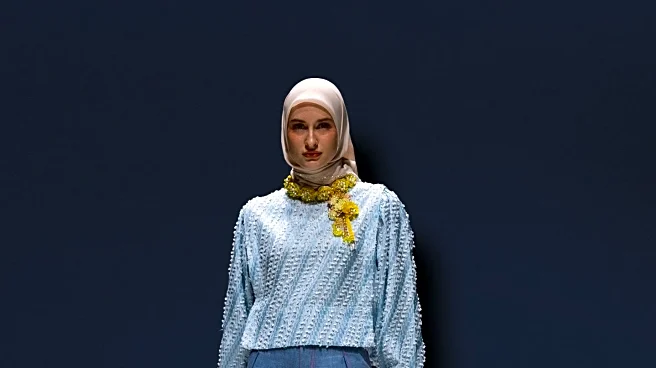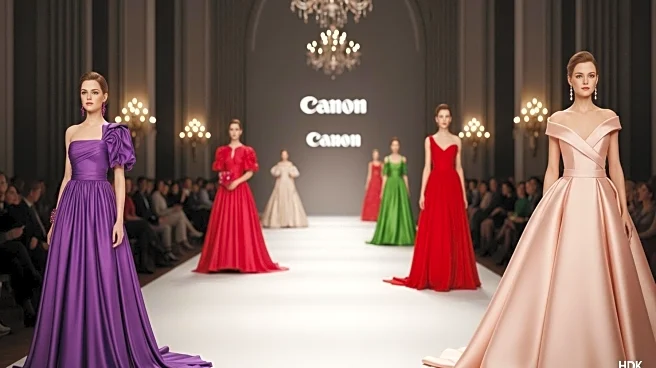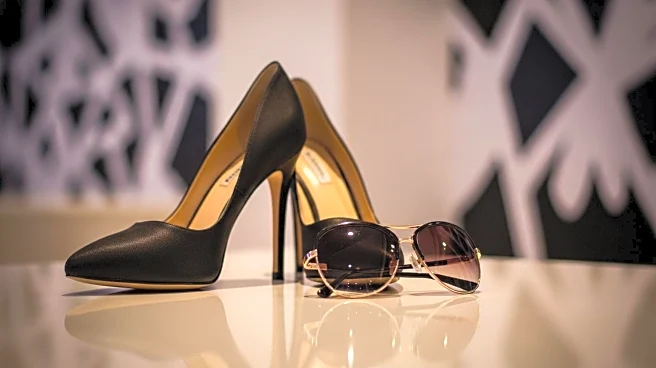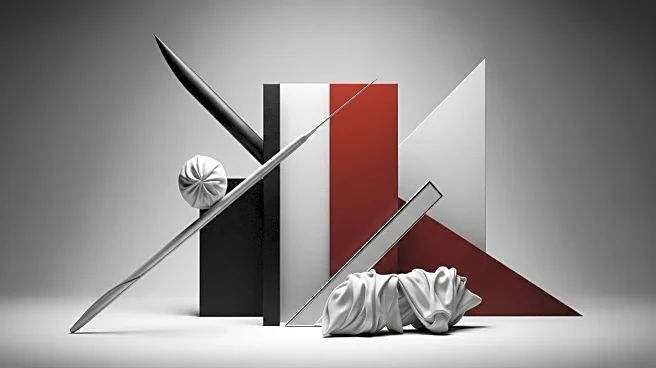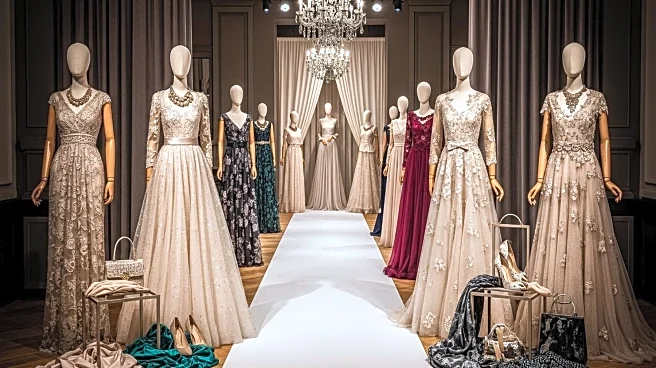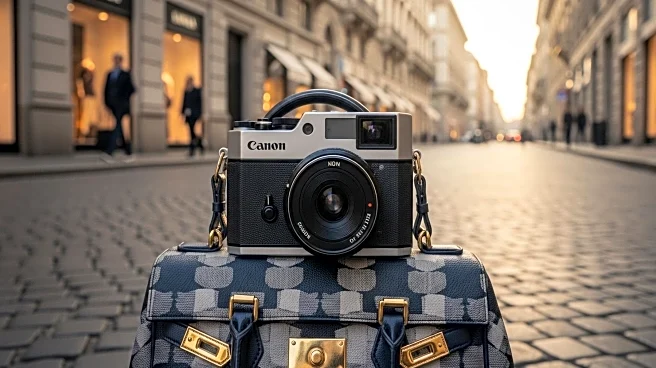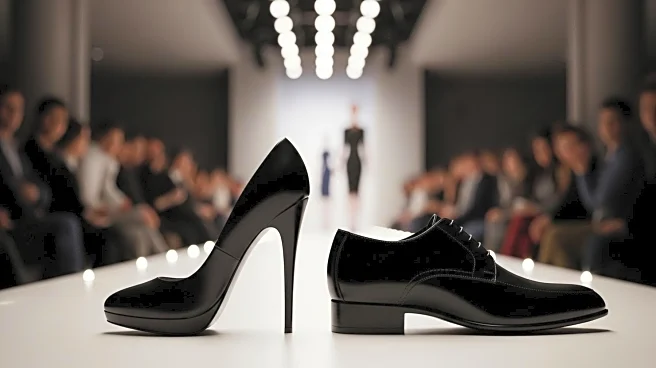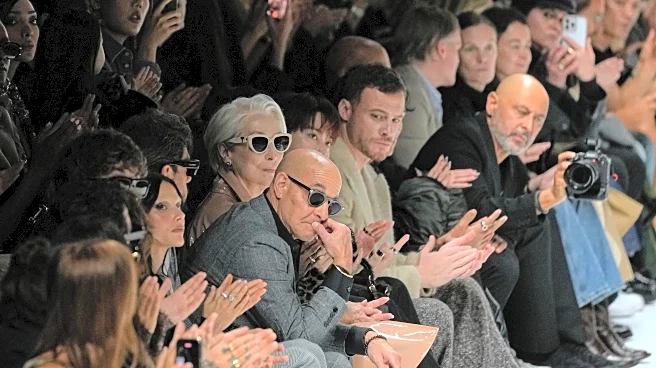What is the story about?
What's Happening?
Milan Fashion Week concluded with a showcase of diverse fashion trends for the spring/summer 2026 season. Key highlights included the use of jumpsuits and stripes across various collections. Missoni emphasized shorter garments, with models wearing bikini bottoms and mini-dresses styled as halter-neck T-shirts. The brand's signature bold patterns were evident in coordinated jumpsuits and tops. Dolce & Gabbana reimagined classic men's striped pyjamas, adding jewelry details and pairing them with black lingerie. The event also featured notable attendees such as actors Meryl Streep and Stanley Tucci. Other designers like Ferragamo and Antonio Marras drew inspiration from the 1920s, while Fendi and Tod's incorporated masculine and feminine elements in their collections.
Why It's Important?
Milan Fashion Week is a significant event in the fashion industry, setting trends that influence global fashion markets. The emphasis on jumpsuits and stripes reflects a shift towards versatile and bold fashion statements. This trend could impact retail strategies and consumer preferences, encouraging brands to adopt similar styles. The presence of high-profile attendees underscores the event's influence and potential to shape fashion narratives. As designers explore historical inspirations and modern aesthetics, the industry may see a blend of classic and contemporary styles, appealing to a broad audience and driving sales in the upcoming season.
What's Next?
Fashion brands and retailers are likely to incorporate the highlighted trends into their upcoming collections, anticipating consumer demand for the styles showcased at Milan Fashion Week. The industry may also see collaborations between designers and celebrities to further popularize these trends. As the fashion cycle progresses, designers will continue to innovate, drawing from past influences while adapting to modern tastes. Retailers will need to strategize on how to effectively market these trends to diverse consumer bases, potentially leading to increased competition and creative marketing campaigns.
Beyond the Headlines
The trends from Milan Fashion Week may also reflect broader cultural shifts towards individual expression and breaking traditional fashion norms. The use of bold patterns and shorter garments suggests a move towards more daring and expressive fashion choices. This could influence not only consumer behavior but also the way fashion is perceived in terms of gender norms and societal expectations. As fashion continues to evolve, it may play a role in challenging and redefining cultural standards, promoting inclusivity and diversity within the industry.
AI Generated Content
Do you find this article useful?
